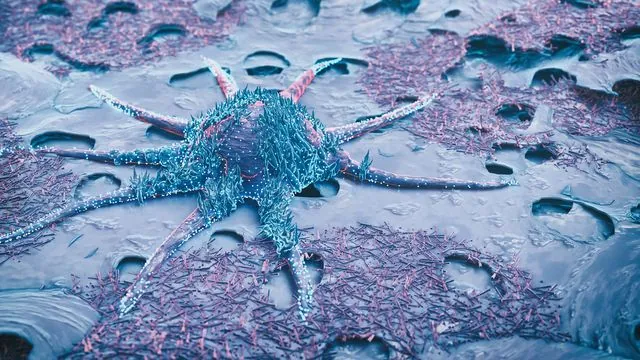
Breakthrough Discovery: New Treatment Method for Deadly Glioblastoma Offers Hope!
2024-11-22
Author: John Tan
Introduction
A groundbreaking study from scientists at the UCLA Health Jonsson Comprehensive Cancer Center has unveiled crucial insights into why glioblastoma, one of the deadliest and most aggressive types of brain cancer, frequently resists conventional treatments. This research opens the door to more personalized treatment strategies tailored to individual patients battling this formidable disease.
The Study
Published in the journal *Nature Communications*, the study combines two powerful methods: genetic profiling and functional profiling. Genetic profiling analyzes the tumor's genetic composition, while functional profiling examines how cancer cells behave in response to various therapies. This innovative dual approach allows researchers to predict the efficacy of treatments and reveal new avenues for effectively targeting glioblastoma.
Key Insights from Researchers
“This study explores a new approach that looks beyond the tumor’s genetic blueprint,” stated Dr. David Nathanson, the senior author of the study. “By combining genetic data with functional tests, we can truly understand how live cancer cells respond to treatments, offering us a clearer roadmap to develop effective therapies.”
Understanding Glioblastoma's Resilience
The sheer resilience of glioblastoma is attributed to its ability to resist apoptosis, or programmed cell death, and its capacity to swiftly adapt to therapies. While traditional genomic medicine employs DNA sequencing to identify mutations and align targeted therapies, it often fails to accurately predict treatment outcomes due to the complex genetic landscape of brain tumors and cancer cell behavior that evolves over time.
Innovative Approach: Combining Functional and Genetic Profiling
To tackle this issue, Dr. Nathanson's team integrated functional profiling with genomic data to investigate glioblastoma's resistance mechanisms. Utilizing a specialized technique called BH3 profiling, the researchers studied tumor samples from patients to observe real-time responses of cancer cells to potential treatments aimed at inducing cell death.
Findings and Machine Learning Tool GAVA
The findings of the study revealed that standard treatments, including chemotherapy and radiation, can alter the tumor's self-destruction processes, which significantly hinges on specific genetic traits, such as the presence of a functional p53 gene. Leveraging these insights, the researchers developed a machine-learning tool named GAVA, designed to predict how glioblastoma tumors may respond to different treatment combinations based on both genetic and functional information.
Targeting BCL-XL for Enhanced Treatment Effectiveness
One such protein is BCL-XL, which plays a crucial role in allowing cancer cells to evade death. Targeting BCL-XL was found to enhance treatment effectiveness in certain glioblastoma cases. Additionally, the researchers tested an experimental drug called ABBV-155, an antibody-drug conjugate that selectively targets BCL-XL in tumors while minimizing damage to healthy tissues.
Encouraging Results
Encouraging results showed that the combination of standard therapies and ABBV-155 led to tumor shrinkage, a rare achievement in clinically-relevant glioblastoma models. Dr. Nathanson emphasized, "The results are incredibly exciting, and we are hopeful that this approach will pave the way for a revolutionary treatment for patients facing this devastating disease."
Looking Ahead
Dr. Timothy Cloughesy, a distinguished professor of neuro-oncology and co-author of the study, echoed this sentiment, stating, "The findings provide a clear path toward developing targeted, patient-specific therapies that could significantly improve outcomes for those diagnosed with glioblastoma." As scientists continue to unravel the complexities of this aggressive cancer, the integration of genetic and functional profiling holds great promise in crafting customized treatment plans, offering renewed hope for patients in this tough battle against glioblastoma.
Conclusion
Stay tuned for more updates on this pioneering research and its potential implications for future cancer therapies!


 Brasil (PT)
Brasil (PT)
 Canada (EN)
Canada (EN)
 Chile (ES)
Chile (ES)
 España (ES)
España (ES)
 France (FR)
France (FR)
 Hong Kong (EN)
Hong Kong (EN)
 Italia (IT)
Italia (IT)
 日本 (JA)
日本 (JA)
 Magyarország (HU)
Magyarország (HU)
 Norge (NO)
Norge (NO)
 Polska (PL)
Polska (PL)
 Schweiz (DE)
Schweiz (DE)
 Singapore (EN)
Singapore (EN)
 Sverige (SV)
Sverige (SV)
 Suomi (FI)
Suomi (FI)
 Türkiye (TR)
Türkiye (TR)